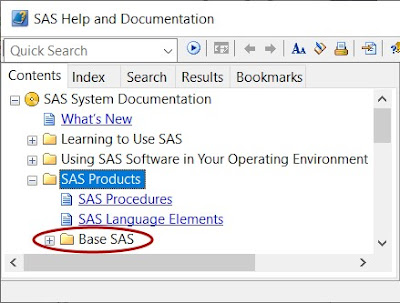When you start
SAS, five windows will be open in the SAS environment. The Explorer, Log, and
Editor windows will be immediately visible, while the Results and Output
windows will be hidden.
Like most
Windows-based programs, SAS has a Menu Bar and Toolbar above the windows. Most
options available on the Menu Bar and Toolbar are similar to other programs,
but the options may be different depending on which window you have active
within the SAS environment. Let’s briefly look at these windows and the purpose
of each of them.
A EXPLORER
SAS Toolbars
Icons in the SAS toolbar when an Editor window is
active.
SAS Toolbars
|
Icon
|
Tooltip
|
Action
|
|
|
Submit
|
Executes any statements you've entered into the Editor window. (If
you have highlighted lines of codes in the Editor window, clicking Submit
will execute just those lines.)
|
|
|
Break
|
Interrupts SAS processing. Click when you want SAS to stop executing
the statements you've submitted.
|
|
|
Help
|
Quick access to SAS Help and Documentation.
|
Clicking on the SAS Help and Documentation icon will open a new window.
For new users,
a good place to start is the Base SAS folder. You can also view an index of all
topics or search for a particular topic.






No comments:
Post a Comment